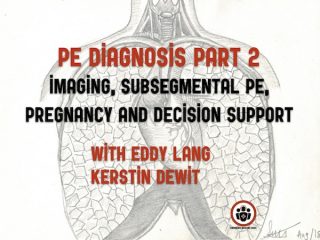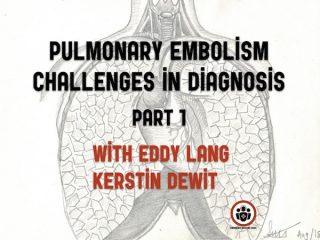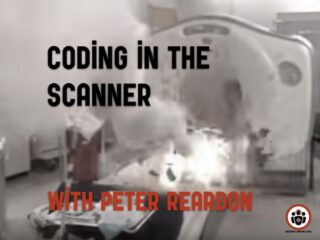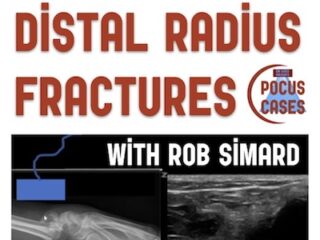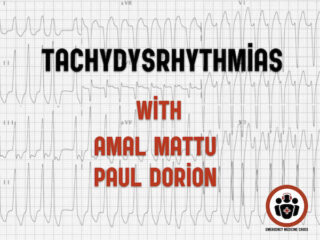Most Recent
Ep 114 Pulmonary Embolism Challenges in Diagnosis 2 – Imaging, Pregnancy, Subsegmental PE
In Part 1 of Pulmonary Embolism Challenges in Diagnosis Drs. Helman, Lang and DeWit discussed a workup algorithm using PERC and Wells score, the bleeding risk of treated pulmonary embolism, pearls in decision making on whether or not to work up a patient for pulmonary embolism, how risk factors contribute to pretest probability, the YEARS criteria and age-adjusted D-dimer. In this Part 2 we answer questions such as: what are the important test characteristics of CTPA we need to understand? Which patients with subsegmental pulmonary embolism should we treat? When should we consider VQ SPECT? What is the best algorithm for the work up of pulmonary embolism in pregnant patients? How best should we implement pulmonary embolism diagnostic decision tools in your ED? and many more…
Ep 113 Pulmonary Embolism Challenges in Diagnosis Part 1
Dr. Kerstin DeWit and Dr. Eddy Lang answer the questions that plague us on almost every shift: Which patients require any work-up at all for PE? What’s the utility of PERC and Well’s scores? Should the newer YEARS decision tool supplant Well’s? When should we order a D-dimer? What’s the diagnostic role of CXR, ECG, POCUS, CTA and VQ? How should we work up pregnant patients for PE? How can we use shared decision making strategies for PE to help us do what’s best for our patients, and many more...
BCE 74 Coding in the Scanner
In anticipation of EM Cases Episode 113 Diagnosis an Workup of Pulmonary Embolism with Dr. Kerstin DeWit and Dr. Eddy Lang, we have Dr. Peter Reardon telling us his Best Case Ever (Coding in the Scanner) of a young woman who presents with a seizure followed by hemodynamic instability, who codes while in the CT scanner...
POCUS Cases 4 – Distal Radius Fracture Diagnosis and Reduction
In this month's POCUS Cases Dr. Rob Simard explains the role of POCUS in distal radius fracture diagnosis and reduction, how to troubleshoot finding the echogenic line that represents the shaft of the radius, and the limitations of using POCUS for distal radius fractures...
Ep 112 Tachydysrhythmias with Amal Mattu and Paul Dorian
In this EM Cases main Episode 112 Tachydysrhythmias with Amal Mattu and Paul Dorion we discuss a potpurri of clinical goodies for the recognition and management of both wide and narrow complex tachydysrhythmias and answer questions such as: Which patients with stable Ventricular Tachycardia (VT) require immediate electrical cardioversion, chemical cardioversion or no cardioversion at all? Are there any algorithms that can reliably distinguish VT from SVT with aberrancy? What is the "verapamil death test"? While procainamide may be the first line medication for stable VT based on the PROCAMIO study, what are the indications for IV amiodarone for VT? How should we best manage patients with VT who have an ICD? How can the Bix Rule help distinguish Atrial Flutter from SVT? What is the preferred medication for conversion of SVT to sinus rhythm, Adenosine or Calcium Channel Blockers (CCBs)? Why is amiodarone contraindicated in patients with WPW associated with atrial fibrillation? What are the important differences in the approach and treatment of atrial fibrillation vs. atrial flutter? How can we safely curb the high bounce-back rate of patients with atrial fibrillation who present to the ED? and many more...
BCE 73 Esmolol in Refractory Ventricular Fibrillation
In anticipation of EM Cases Episode 112 on Tachydysrhthmias with Amal Mattu and Paul Dorion, Melanie Baimel tells her Best Case Ever of a previously healthy young man who presents in refractory ventricular fibrillation after receiving multiple single shocks, ongoing chest compressions, several rounds of epinephrine, amiodarone and dual sequence defibrillation without ROSC...

